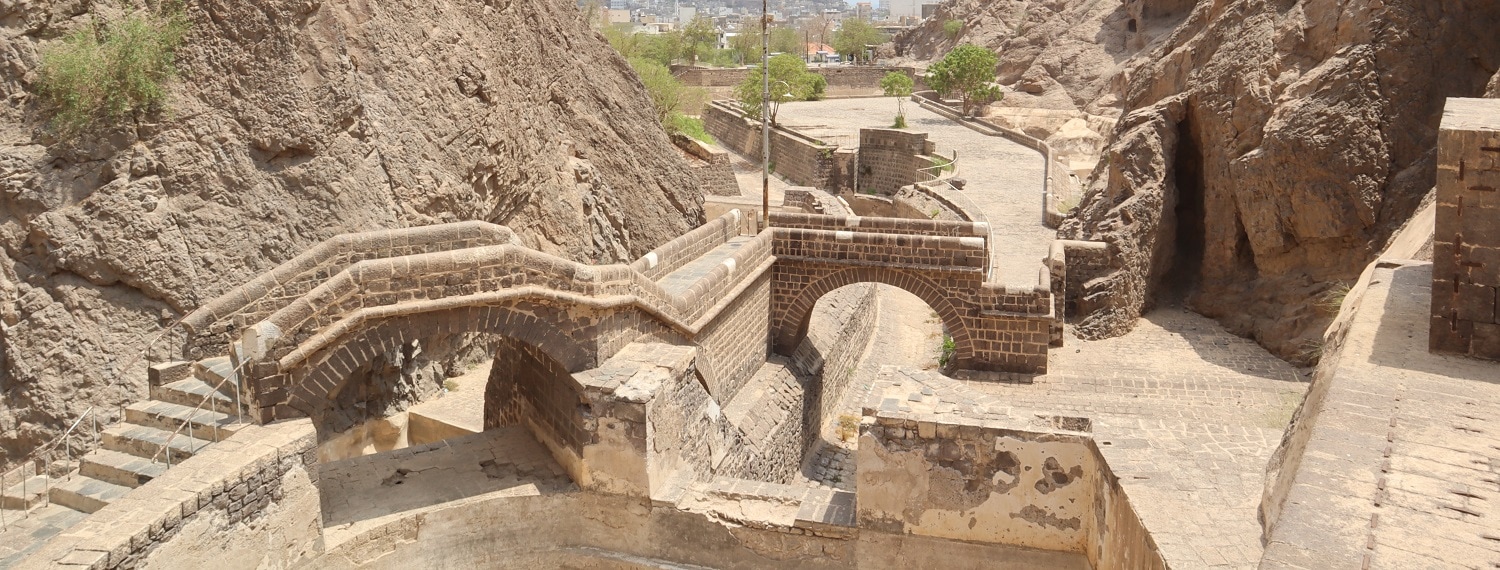
Cisterns of Tawila (Tanks of Aden). (South24)
آخر تحديث في: 27-09-2022 الساعة 8 مساءً بتوقيت عدن
Raad Alrimi (South24)
The Southern city of Aden is full of landmarks and archaeological sites which the coastal city inherited from a unique cosmopolitan history characterized by a high degree of diversity. The different stages experienced by Aden carved their prints and left behind houses, temples, castles, shrines, churches and other landmarks.
However, much of this historical heritage and archaeological landmarks were destroyed due to different factors, foremost of which are the 1994 and 2015 wars in addition to the urban sprawl by powerful figures and citizens as well as the random buildings that have consumed the roots of the city.
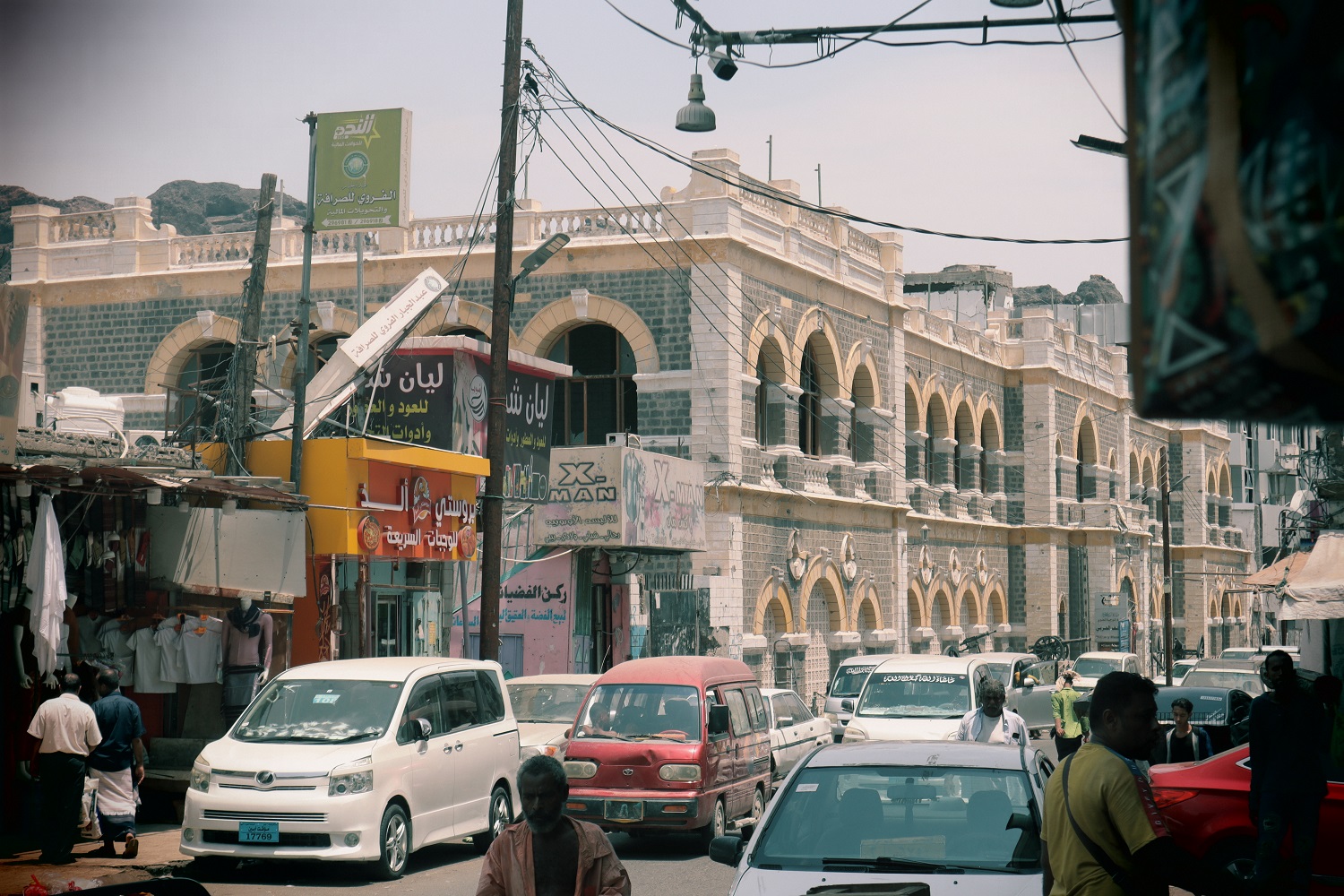
The Military Museum in Aden (South24 Center)
Moreover, the natural conditions including floods, rain and earthquakes played a role in threatening the history of Aden amid the lack of interest by the government and the absence of restoration projects that have to accompany such problems. So far, it seems that Aden landmarks have been in the lowest level of official interest locally and internationally.
Historical landmarks
The Tanks of Aden (also known as “Cisterns of Tawila”) in Crater is one of the most important archaeological landmarks in the city. It dates back to the 15th century BC according to historians [1] these tanks were used to store water. There were originally 55 tanks but this number was reduced to only 18 today.
The list of the main landmarks also includes the historic “Sira Fortress” which was likely built in the 11th Century A.D. According to historians, the fortress was established by orders from the Ottoman Wali (governor) of Aden, Osman Al-Zangabili Al-Tikriti for military purposes including countering the Portuguese attacks. [2]
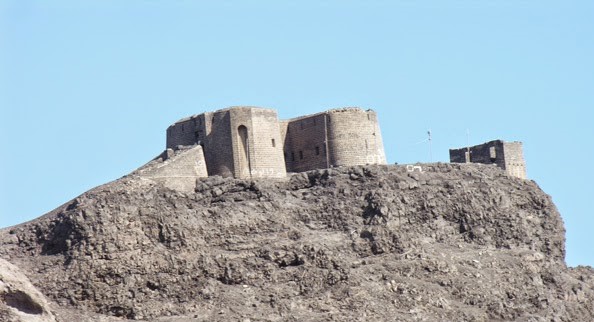
“Sira Fortress” in Aden (Yemeni Tourist Guide)
The “Ottoman Cemetery” which was built in 1284 A.D in Al-Memdara [3] is one of the historic landmarks left by the Ottoman state in Aden.
Moreover, British colonialism left behind diversified landmarks and monuments in Aden including “Little Ben” Clock which was built by British engineers in 1890 A.D. There is also the Crescent Hotel which was built in the city of Al-Tawahi in 1930 and is one of the oldest hotels in the Arabian Peninsula. It was the place where Late Queen Elizabeth II stayed during her famous visit [4] in 1954.
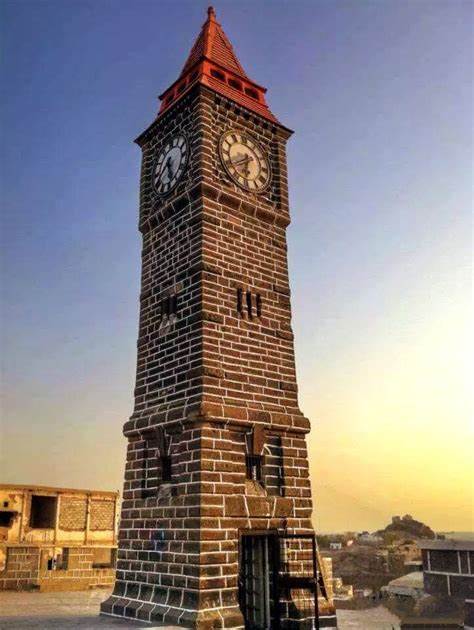
The "Little Ben" Clock in Aden (Facebook)
The list of the British colonialism’s landmarks also includes “The Jewish Cemetery” in Al-Mualla which was built [5] in 1947, The Military Museum in Crater which dates back [6] to 1918 and the Immaculate Conception Church (the Hafon Church) in Al-Mualla district which was built [7] in 1963.
Furthermore, the city of Aden is the home of religious landmarks affiliated with the sects who live there. This includes Jain Hindu Temple in Sira District which was built [8] in 1872, "the Persian Temple" and Shree Tricamiraiji Temple in the same district.
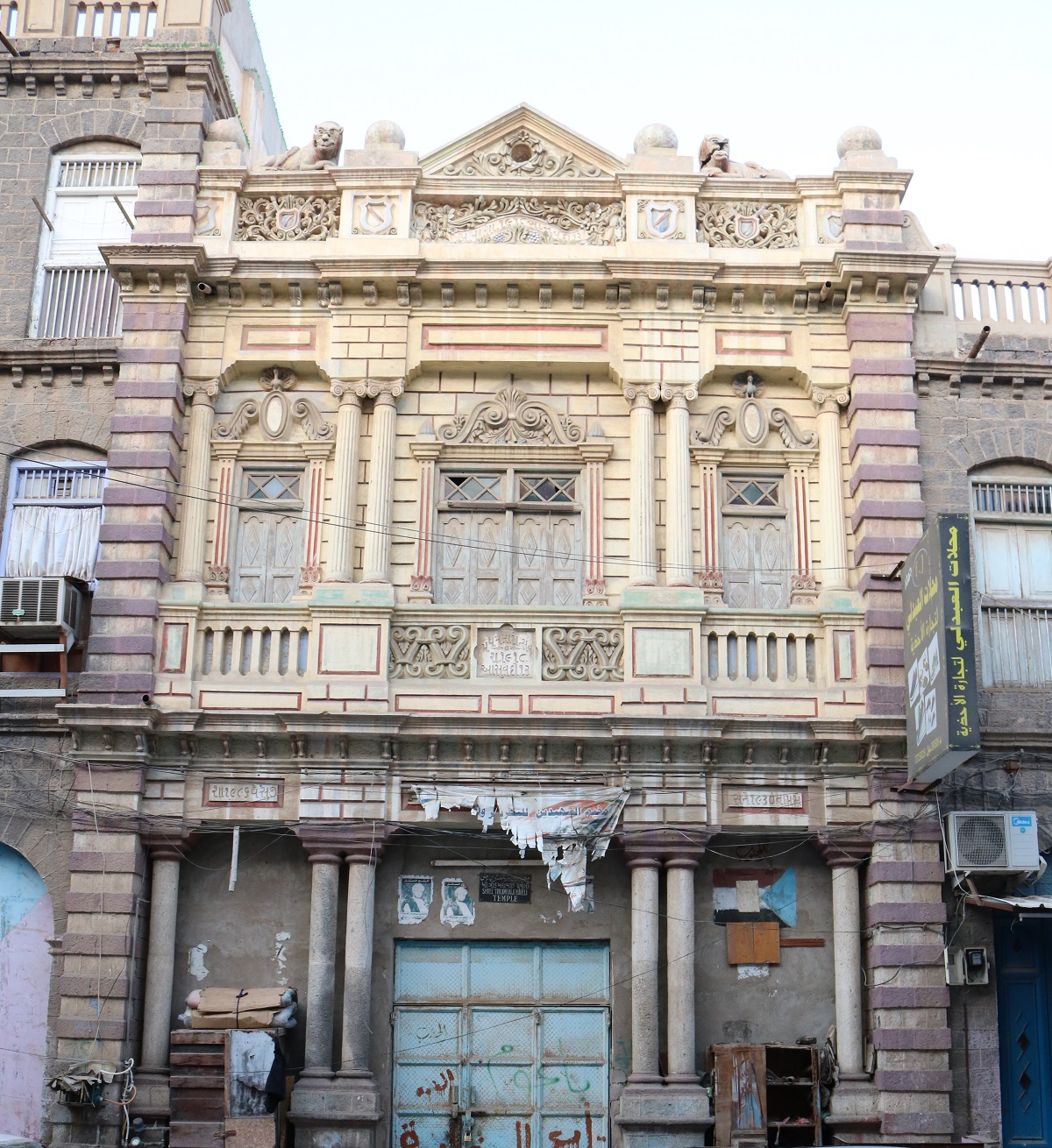
The Shree Tricamiraiji Temple in Aden's Crater (March 1st, 2022. South24 Center).
Mohammed Alsaqqaf, Director of the Museums and Heritage Office in Aden told "South24": "The main landmarks in the governorate were monitored through a field survey. The number of these landmarks is about 46 throughout the country".
Turmoil and destruction
The 2015 War, launched by the Houthis and Saleh forces against Aden and South, caused big damages to important landmarks of Aden including "Tourists Quay" in Al-Tawahi District which was bombed by the Northern forces.
Moreover, Church of Santa Maria" or the “Catholic Church", was damaged due to an airstrike by the Saudi-led Arab Coalition.
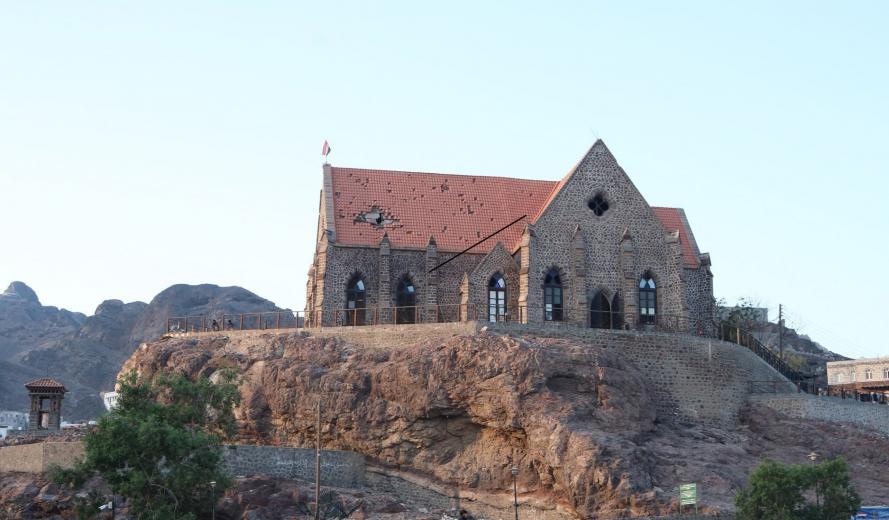
Church of Santa Maria (formerly) and the current Legislative Council (It was built in 1871 during the British colonialism (South24 Center).
The "Little Ben" Clock was partially stolen according to experts who spoke to "South24". This is in addition to the random construction by local people. However, Tanks of Aden have remained the most badly affected today due to growing random buildings around the landmark whose walls were distorted by writing on them.
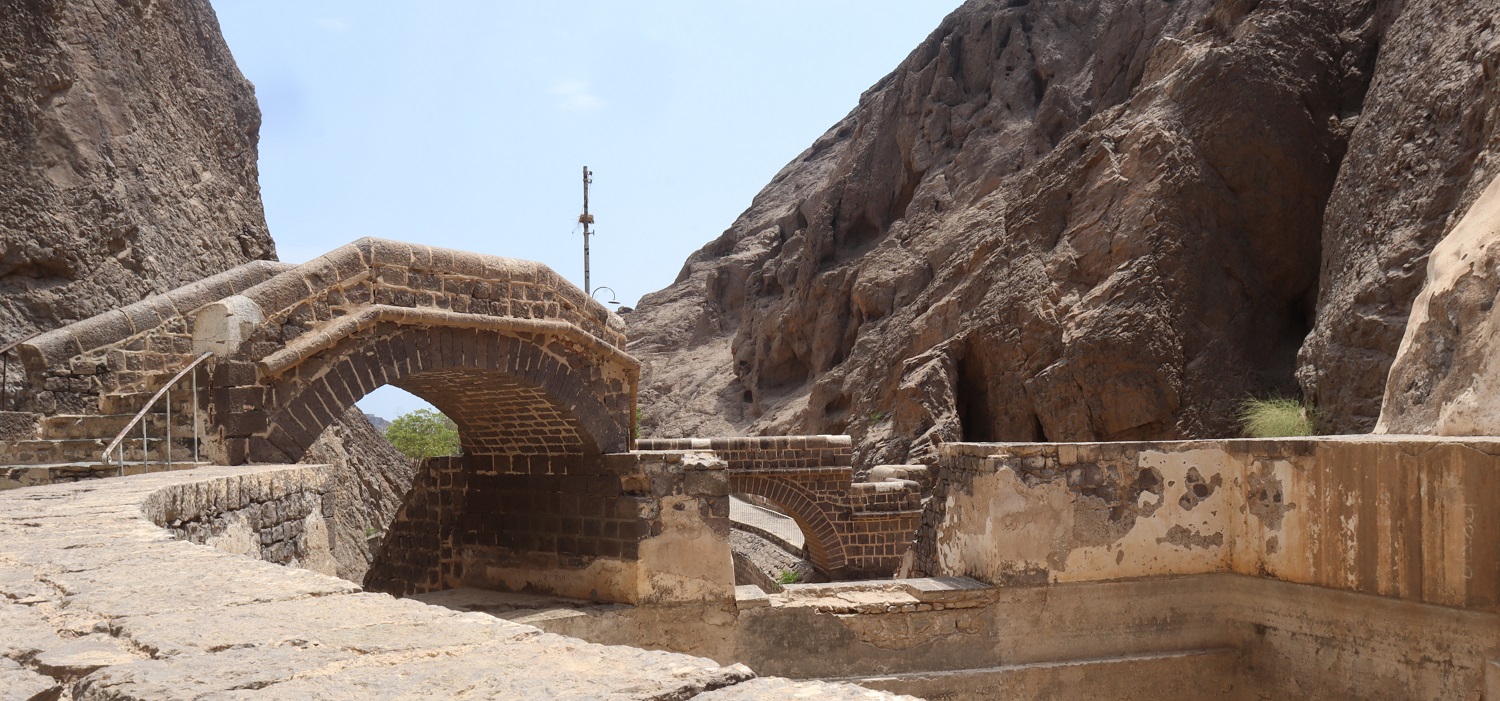
A heavily damaged tank in Aden (South24 Center)
Additionally, the archaeological Sufi "the Iraqi Mosque" Sira District was partially damaged as a result of widespread attacks after the 1994 War by extremists. Some tombs and shrines inside the mosque were exhumed. Tomb of Imam Shatri in Al-Mualla district which is considered an important archaeological religious landmark was also exhumed at the same period.
Likewise, other archaeological landmarks such as "the Seven Dams" in Sira District were affected by random buildings around its campus and its surroundings. The displaced people who fled the war regions and flocked to Aden have exacerbated the problem of the archaeological landmarks in the city as many of them settle near important sites such as the "Jewish Cemetery" in Al-Mualla.
Deprivation
Jacqueline Al-Batani the Head of "My Identity" (Hawiyati) initiative to protect heritages in Aden, Amr Akil, the Head of the STC's Cultural department and archaeological expert Mohammed Manqosh told "South24" that there are no Aden's landmarks in the UNESCO World Heritage List.
Al-Batani said: "No efforts were exerted in this regard apart from one poor attempt made by a local institution interested in the archaeological and cultural landmarks in Aden to include the city of Crater [Sira] as a historical city like the other ancient Arab cities. However, it was a failed attempt".
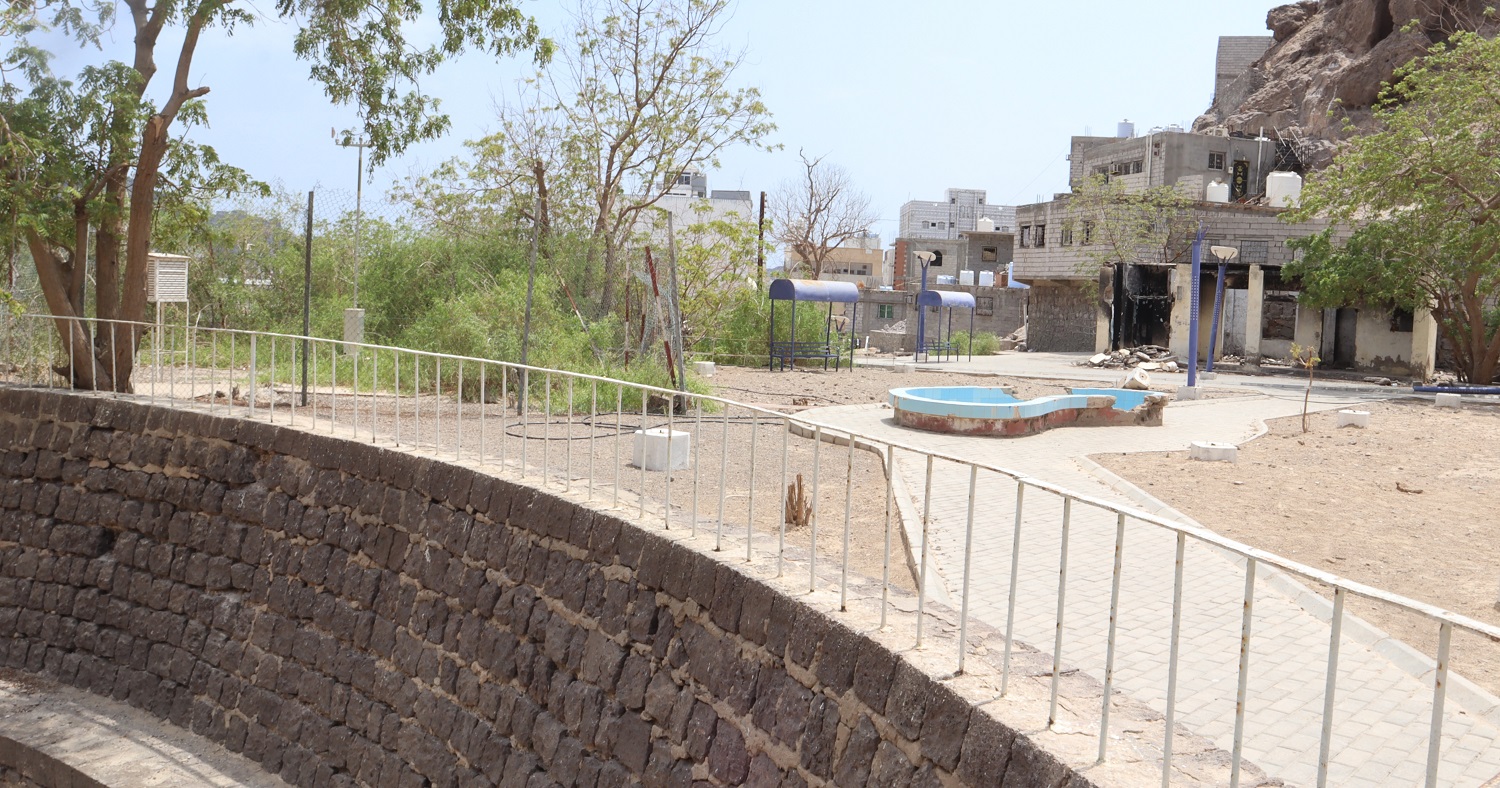
The urban sprawl has expanded near the Tanks of Aden (South24 Center)
She added: "There are a number of plans and programs that must be implemented to achieve this. There has been no official or popular commitment. The developments inside the monuments did not stop.” Al-Batani accused “all governmental authorities, including the security authorities in Aden, of not protecting and neglecting these landmarks”.
She indicated that “Tanks of Aden" landmark was excluded from an initial list nominated for UNESCO World Heritage due to the acts of sabotage and obliteration of identity against it.
Amr Akil noted that “Al-Haswa Reserve" was on the verge of entering the UNESCO World Heritage List but it was excluded due to the expanded violations against its natural environment.
Commenting on this, Al-Saqqaf said: "Accumulated efforts were exerted to add Tanks of Aden to the UNESCO World Heritage List. We delivered a file to Bahrain and was initially approved but the random activities and interference by some governmental institutions (lands) without consulting the stakeholders dropped this initial approval".
The local official criticized what have been done by civil organizations as they “Interfere and bypass laws, regulations, and regulations". He added: "The role of the civil community is to supervise, educate and support government agencies, but not to replace them. Some partial restoration work was carried out by civil organizations that have largely distorted the archaeological landmarks".
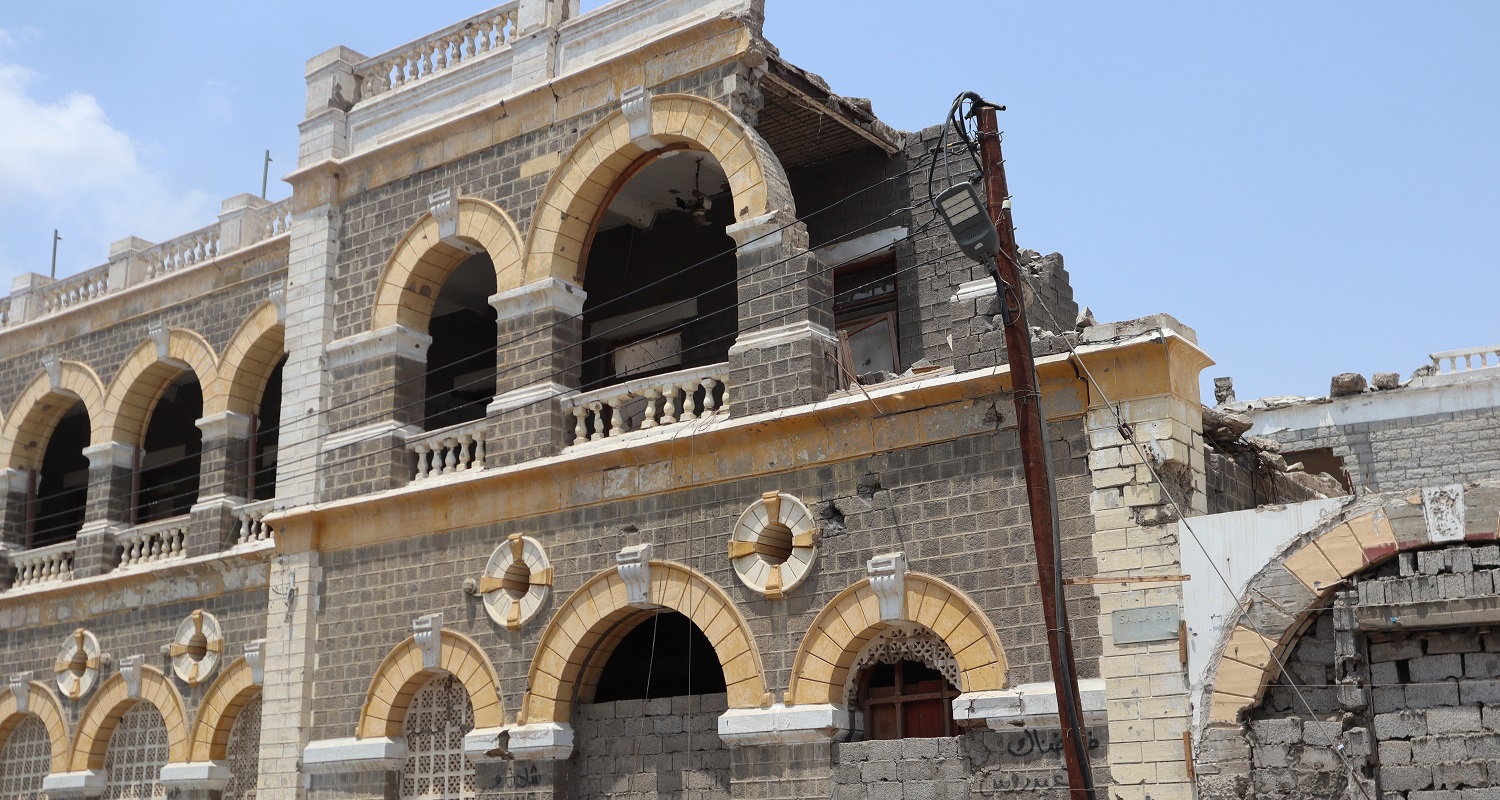
Damage caused by the 2015 war in the Military Museum in Aden (South24 Center)
In this regard, Akil said: “Restoration processes for some landmarks were partial. This has caused more obstruction rather than real treatment. Therefore, we recommended that these landmarks should nit be touched by local organizations".
He added: "We suffer from a scandalous and shameful negligence towards activating the laws related to protecting the archaeological sites by the security bodies, tourism security, overland and maritime crossings, prosecutions, judiciary and executive authorities in Aden".
Solutions
Regarding the possible solutions to protect archaeological and historical landmarks in Aden, Akil said: "There are two ways to achieve this; the first is to restore these damaged landmarks. However this move currently may be ineffective as it needs high technologies and huge funds to preserve their identity".
He added: "The second option is to entrust the protection of these archaeological sites to one party to end the fragmentation state which has passively impacted the protection of these archaeological landmarks in Aden. Governmental and private bodies including the Culture and Tourism Ministry don't do their job appropriately".
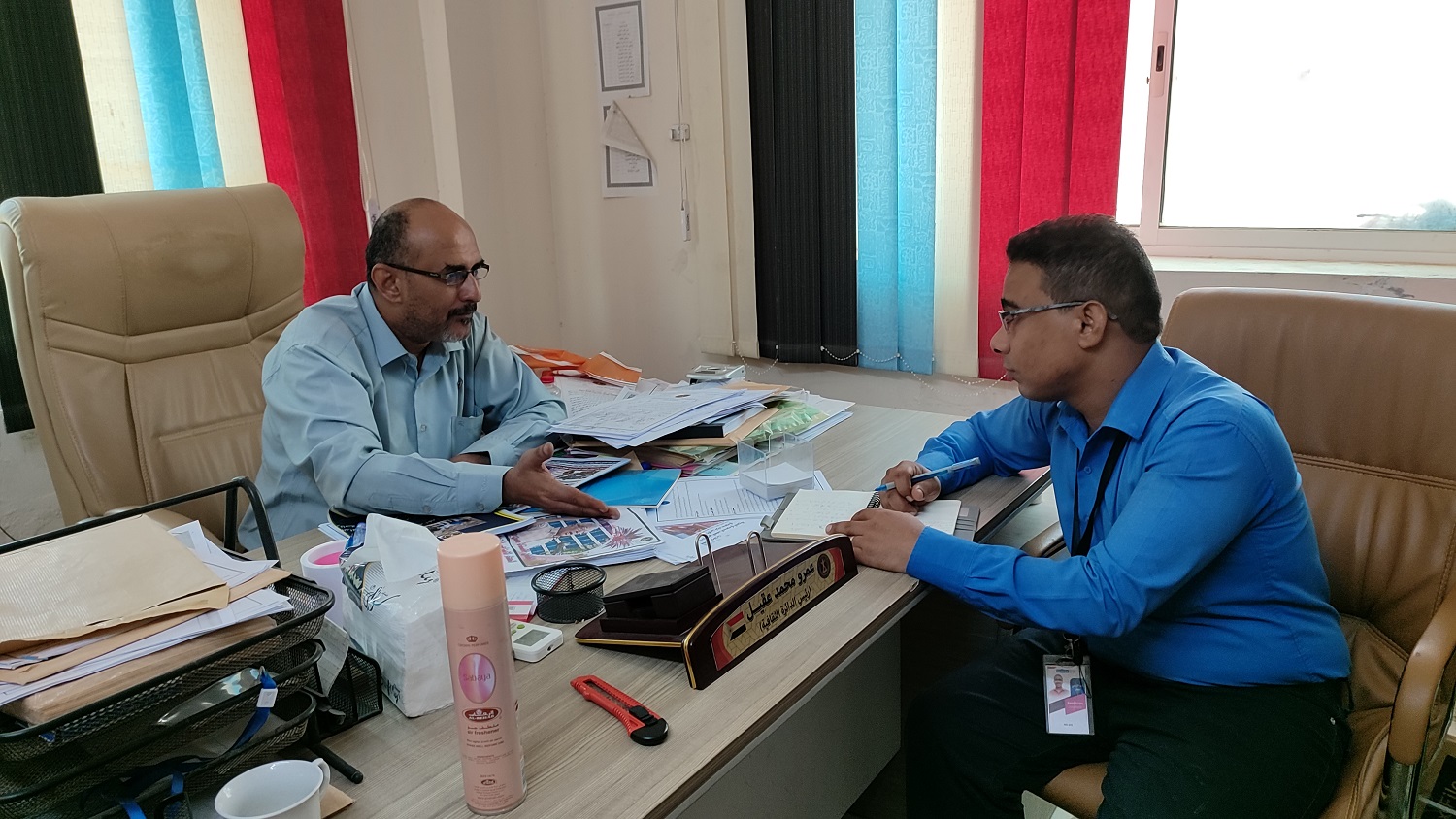
South24 correspondent with Amr Akil, the Head of the STC's Cultural department
The official accused UNESCO of ignoring Aden's archaeological landmarks. He added: "UNESCO has an office in Aden but unfortunately it has not issued even a single statement to condemn, denounce or pressure the governmental bodies regarding this file".
For his part, Al-Saqqaf, believes that "increasing the community awareness of the importance of Aden's archaeological and historical landmarks is the first step towards treating all problems".
He concluded: "We have to cooperate to increase the community awareness about the importance of maintaining these landmarks. We should start from different education stages (elementary, secondary, university) to enhance this awareness".

قبل 3 أشهر

قبل 3 أشهر